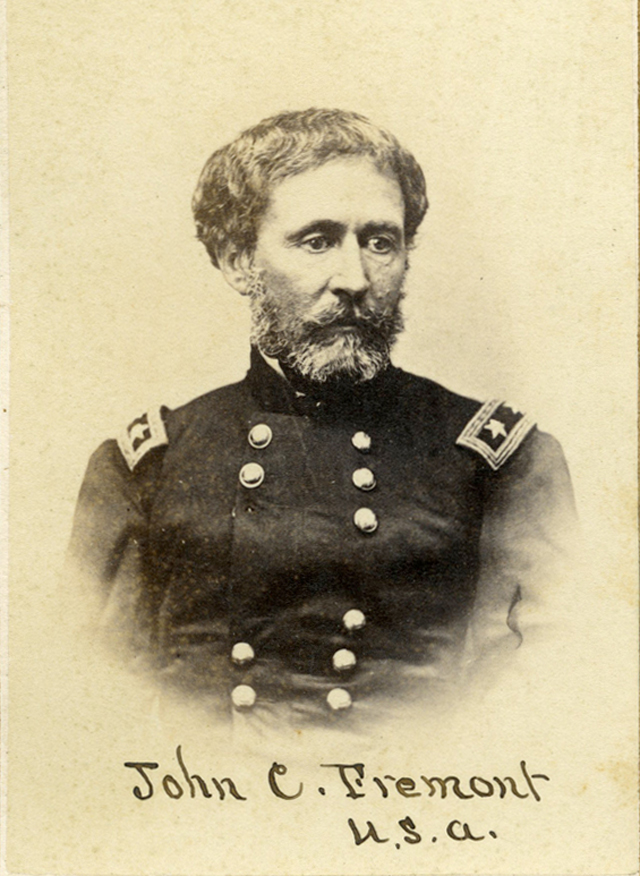Gallery: Actions in the fall of 1861 and early 1862




Born and raised in the south, John C. Fremont joined the army as a second lieutenant of topographical engineers in 1838. For three years he helped map the area between the upper Mississippi and Missouri Rivers. Fremont spent the early 1840s exploring and mapping much of the area between the Mississippi River and the Pacific Ocean. With Kit Carson as his guide in 1843, he went to Oregon and California, publishing a detailed report that gave him a national reputation and provided valuable information for settlers eager to move west.
In the spring of 1845, Fremont led sixty-two well armed men on a ŌĆ£scientificŌĆØ expedition to California, where he helped promote the ŌĆ£Bear FlagŌĆØ revolt of dissident U. S. citizens against Mexico and joined Commodore Robert StocktonŌĆÖs naval force in conquering the area. Appointed governor, he refused to surrender the office to General Stephen Kearny, who arrived with official orders to establish a government. He was court-martialed and resigned from the army. Staying in California, he struck gold and became a millionaire, only to lose it all because of a faulty title. Fremont was elected senator in 1849, but his reelection was defeated by the pro-slavery party in 1851.
When the Civil War began, Lincoln appointed Fremont as major general in command of the Western Department, based in St. Louis. Recruiting, organizing, arming, and effectively commanding a large, untrained and ill-equipped army surrounded by Confederate sympathizers was beyond FremontŌĆÖs experience and ability. He was blamed for inaction that lead to the Union defeat at WilsonŌĆÖs Creek and the death of General Nathaniel Lyon. Fremont answered the criticisms by ordering the emancipation of the slaves and confiscation of the property of all pro-slavery supporters in Missouri. President Lincoln asked Fremont to rescind the order, but Fremont refused and insisted he would comply with LincolnŌĆÖs request only if publicly order to do so. Fremont was reassigned to command another army in Virginia where he performed without distinction against Thomas ŌĆ£StonewallŌĆØ Jackson. When his army was merged with another under the command of his long-time enemy, John Pope, Fremont resigned.
He was nominated for president in 1864 by Radical Republicans, but was persuaded to withdraw. For the next several years he was involved in several western railroad projects without success and was ultimately bankrupted by a railroad swindle. He served without controversy as governor of the Arizona Territory from 1878 to 1883 and died in New York City in 1890.
Image Courtesy WilsonŌĆÖs Creek National Battlefield; WICR 31562
© 2011-2025 Springfield-Greene County Library System. All Rights Reserved. Site by Schilling Sellmeyer.